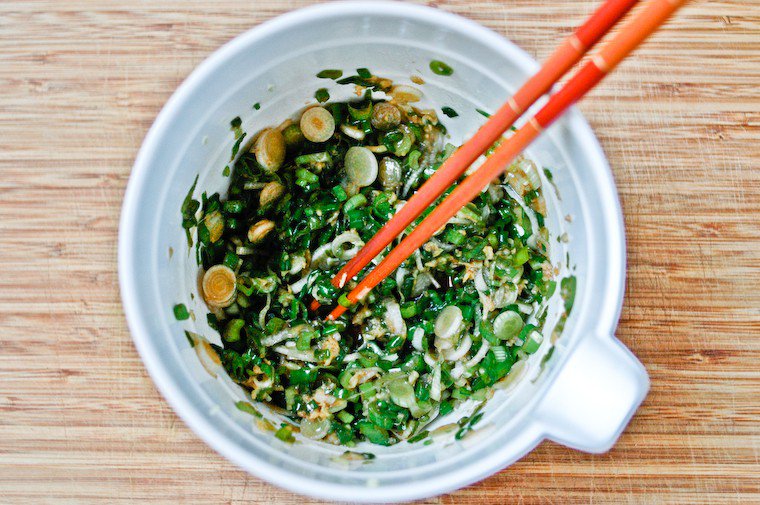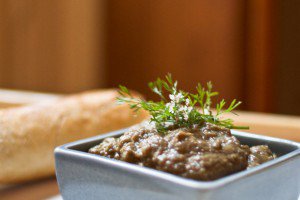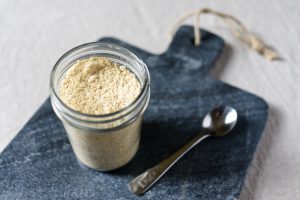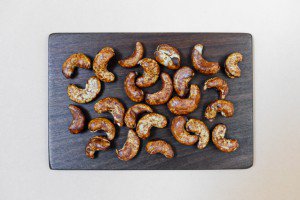I’ve long been uneasy about spring onions. It’s the kind of produce that I feel deserves a special treatment that will make it shine — local scallions are in season but briefly before the onion part bulges and takes over the green stems — but I’m never quite sure what that treatment might be.
They taste too sharply onion-y to me to be served solo as a side vegetable, yet cooking them with other vegetables seems wasteful, because then their spring nature gets lost in the shuffle and they are reduced to playing the role of an expensive onion.
It occurs to me just now that using them in a stir-fry with noodles and a little meat or perhaps shrimp would be a fine solution (I’ve been watching Jamie Oliver’s Food Revolution and he does like his stir-fry), but for some reason I don’t really do stir-fries (though I’ve been watching Jamie Oliver’s Food Revolution and now I might do more stir-fries).
Piquant from the onion, hot from the ginger, and savory from the soy sauce, it is an outspoken topping that will amp up any number of preparations, Asian-inspired or otherwise.
This is why I was thrilled to add David Chang‘s ginger scallion sauce to my spring onion repertoire. The recipe is in his Momofuku cookbook, co-written with Peter Meehan, which I borrowed from my Hidden Kitchen friends*. It also happens to be excerpted on the Amazon page, so I suspect this might be the single most executed recipe from the book, and deservedly so: it is very simple (six ingredients and as many minutes of prep) and very good.
All you do is take a bunch of scallions, slice them finely, and toss them with fresh ginger and a salty-sour dressing. The resulting mixture David Chang calls a sauce, but you shouldn’t imagine a sauce in the conventional sense: it’s chunky, not liquid, but it is meant to be spooned over things, so it might best be described as a cross between a sauce and a condiment.
Piquant from the onion, hot from the ginger, and savory from the soy sauce, it is an outspoken topping that will amp up any number of preparations, Asian-inspired or otherwise, so it’s a great one to have up your sleeve.
In the book, it is presented as part of a dish of ramen noodles topped with (really quick) quick-pickled cucumbers, bamboo shoots, pan-roasted cauliflower, and torn pieces of nori seaweed. I’ve done a sort of take on that (with lo mein noodles and without the cauliflower or bamboo shoots), and we’ve also had it over various other things like tofu, rice, scrambled eggs, or steamed potatoes with smoked trout — the latter was particularly successful. Chang recommends it with grilled meat, too, and I can see how well that would work.
* Did you know my Hidden Kitchen friends have a blog now? Well, they do!

Have you tried this? Share your pics on Instagram!
Please tag your pictures with #cnzrecipes. I'll share my favorites!
Ingredients
- one bunch scallions (a.k.a. spring onions), about 200 grams (1/2 pound) -- choose fresh ones with vibrant green stalks, and no yellowed or browned parts
- one knob fresh ginger, about 70 grams (2 1/2 ounces)
- 2 tablespoons neutral-flavored vegetable oil
- 1 teaspoon soy sauce (use coconut aminos to make this paleo)
- 1 teaspoon sherry vinegar
- 1/2 teaspoon sea salt
Instructions
- Trim the scallions, removing the root part and the tips of the greens if slightly bruised. Slice the scallions finely, and place them in a medium bowl.
- Peel the ginger using the tip of an upturned spoon and grate it finely -- using a box grater, a ceramic grater, or your impressive knife skills. Add the grated ginger to the bowl.
- Add the oil, soy sauce, vinegar, and salt, and toss well; I like to do this with chopsticks because it feels nice.
- Let rest for 15 to 20 minutes at room temperature before using, so the scallions will settle and the flavors will come together. Taste and adjust the seasoning.
- Leftovers will keep in the fridge for a day or two, well covered.
Notes
Adapted from the Momofuku cookbook, by David Chang and Peter Meehan.














